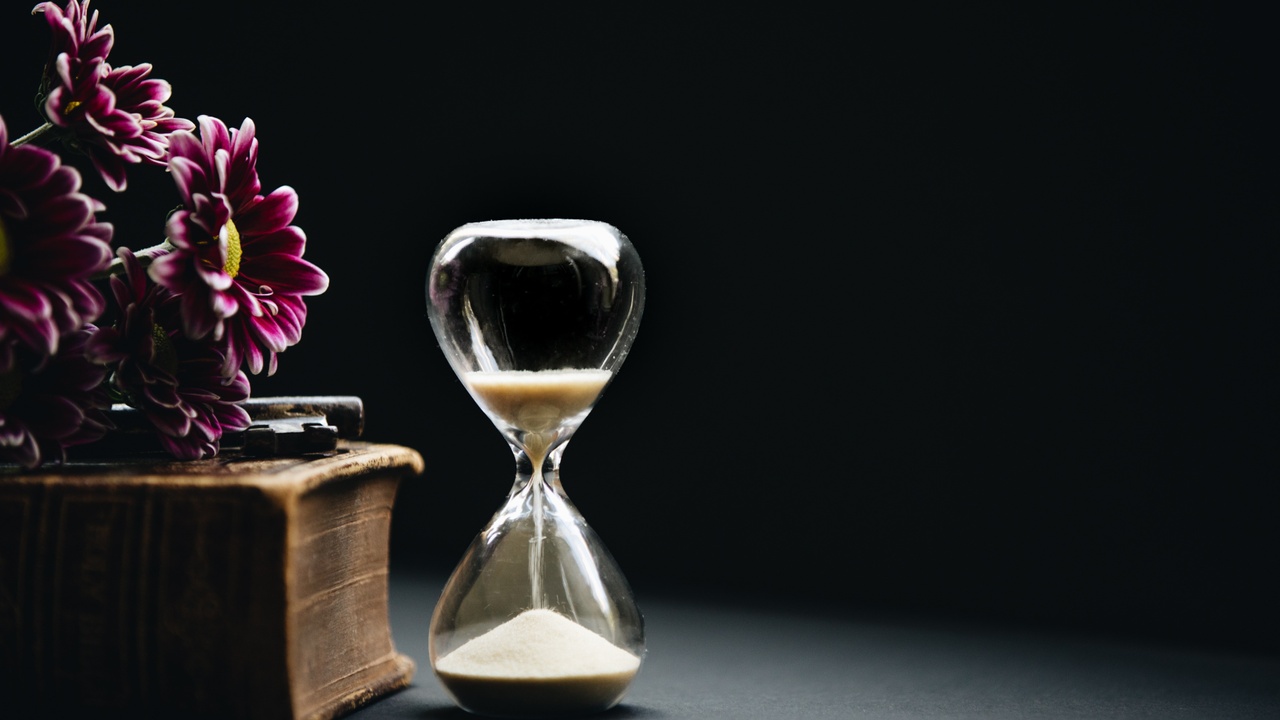
Have you ever found yourself lacking the energy to do activities you once enjoyed, snapping at loved ones, or feeling a flood of dread when your alarm goes off on a workday? You may be experiencing signs of chronic stress, which, when unmanaged, can lead to burnout.
The World Health Organization defines burnout in the International Classification of Diseases (ICD-11) as “a syndrome conceptualized as resulting from chronic workplace stress that has not been successfully managed. It is characterized by three dimensions: feelings of energy depletion or exhaustion; increased mental distance from one’s job, or feelings of negativism or cynicism related to one's job; and reduced professional efficacy.” Burnout results from chronic, unmanaged stress and involves overwhelming exhaustion, cynicism and detachment from the job, and a sense of ineffectiveness and lack of accomplishment.
Burnout differs from stress. In the context of the workplace, stress often results from increased mental and physical demands. Our amygdala can perceive this as a danger, activating our sympathetic nervous system’s mobilization (fight/flight) response. Stress triggers hyperarousal (increased cortisol, blood pressure, and heart rate), over-engagement (feelings of frustration, fear, and anxiety), and an attitude of hope (“I can”). Burnout results from an accumulation of unmanaged stress or trauma, which can be perceived by the ANS as a life threat, thus activating the immobilization (freeze) response. Burnout triggers hypoarousal (decreased heart rate, blood pressure, metabolism), disengagement (feelings of depression, numbness, dissociation), and an attitude of hopelessness (“I can’t”). Chronic, unmanaged stress keeps the nervous system stuck in states of high arousal, decreasing resilience and increasing trigger sensitivity. It’s critical to be aware of how unmanaged stress accumulates in your life so we can focus on preventing burnout.
As a new dentist practicing full-time, I've experienced chronic stress. As a yoga teacher and wellness coach, I’m equipped with the tools to manage stress successfully. I've gathered five strategies that have worked for me to manage stress and prevent burnout.
1. Embrace stress and train your nervous system to manage stress better
Chronic, unmanaged stress can result in burnout, and it can increase the risk of illness, depression, and early mortality, but not all stress is bad. Stress is an inevitable part of life, and it is incredibly helpful in teaching us to optimize the stress response, better self-regulate, and be more resilient. It’s been shown that the way we think about our stress matters, and embracing stress with the attitude that it is helpful can transform our relationship with it.
Just like we lift weights to train our muscles to grow stronger, we can train our nervous system to manage stress better by improving the regulation of our vagus nerve, the primary nerve serving the parasympathetic nervous system. Increasing vagal regulation promotes our body’s ability to rest, recover, connect, and create. Practices that stimulate the vagus nerve through acute, controlled stress increase our resilience to perceived stress and train the body to relax faster after stress. Studies show that we can increase vagal tone and improve numerous physiological and psychological functions through practices like meditation, breathwork, yoga asana, cold exposure, and singing. By embracing stress as growth and building your wellness toolbox, we can learn to better self-regulate and manage stress outside of our control.
2. Conduct an identity check-up to develop a better self-understanding
We spend an immense amount of time and energy on education and job training. Often, we are pursuing goals and working to build a lifestyle that we envisioned many years ago. Along the journey, our identities evolve, and we may realize we’ve been working towards goals or a lifestyle we no longer value. In the research on preventing burnout, one of the recommended strategies is to develop a better self-understanding. When we better understand our values, desires, and motives, we can better align our actions to create a more fulfilling, joyful, and meaningful life.
Conduct an identity check-up: Set aside time to reflect on the following questions:
- What matters most to you? What are your core values and character strengths?
- How do you wish to spend your time? How do you want to feel every day?
- How do you define a life well-lived? What is your vision for your life?
- Are your current goals and actions aligned with this vision?
3. Break up with busyness, befriend boredom, and optimize sleep
Most of us have spent our lives busy, over-scheduled, and, more recently, addicted to our technology. Busy-ness has become our programmed baseline. When we are less busy, we can feel agitated or as though we should be doing more. Preventing burnout requires a radical shift in our relationship with busyness and our phones.
Adults in the US have been shown to spend a daily average of 2-4 hours on their devices and unlock their phones 100-150 times a day. Smartphones and social media are designed to be addictive in an economy where your attention is a commodity. Excessive smartphone usage contributes to chronic stress, decreased focus and attention, reduced productivity and flow state, poor sleep, and increased strain on relationships. In addition, technology deprives us of our solitude. Ten years ago, solitude was unavoidable; we experienced solitude when waiting in line, on an elevator, commuting, exercising, eating meals, spending time in nature, walking the dog, etc. Today, we can banish boredom at any time with our smartphones. But reclaiming these pockets of solitude is essential because time free from inputs is when we connect disparate ideas, solve our most challenging problems, self-reflect, and set personal goals.
Doing less also gives us more time to prioritize quality sleep. Sleep is the most underutilized and powerful wellness tool available. As one of my sleep teachers, Jennifer Piercy, says, sleep is anti-inflammatory medicine that nourishes all physiological and psychological functions — hormones, circulation, cardiovascular and brain function, metabolism, memory, consolidation of learning experiences, emotional processing, creativity, and ability to focus.
We are more productive and fulfilled when we eliminate distractions, focus our attention on the essentials, and hold space for true rest and sleep. See some strategies below:
- Only take aligned action: It’s essential to do the identity check-up described in the first strategy and evaluate if your current goals and actions align with your desired identity. Get realistic about how you are currently spending your time by tracking your calendar and checking your phone’s screen time reports. Evaluate each activity on your calendar and app on your phone: does this align with your desired life, and how does it support your values?
- Say ‘no’ and set boundaries: Say ‘no’ to anything not aligned with your desired life by finding ways to eliminate, automate, and outsource. Implement boundaries related to scheduling, cutting back on working days, changing jobs, or hiring more support. Set boundaries on your phone: turn off all notifications, delete apps that are not essential, and batch texts, emails, and social media time to a specific block of the day. Time blocking is a boundary that allows us to show up with focused, undistracted energy. Monotasking reduces the attention residue and stress from task-switching or “multi-tasking.”
- Befriend boredom, embrace naps, and rediscover leisure: Reengage leisure and play through activities, such as art, music, sports, crafting, etc. Start implementing phone-free activities to reclaim micro-moments of solitude. Recognize that true rest is productivity. Instead of checking email or scrolling social media as an afternoon break, consider a nap or practice Yoga Nidra, a sleep-based guided meditation where you enter deep states of rest and repair. I recommend the app Insight Timer for free guided practices.
- Optimize sleep: The most effective strategy for improving quality sleep is practicing a digital sunset. At least one hour before bed, shut down technology and avoid computer work, phone scrolling, and watching TV. Instead, create a sleep ritual that allows you to slow down before falling asleep. Consider relaxing activities like reading, practicing restorative yoga, taking a bath, snuggling with a pet, meditation, or Yoga Nidra. A digital sunset calibrates our circadian rhythm and helps us sleep better because blue light exposure at night suppresses the release of melatonin. We can also support melatonin production by getting ~10 minutes of outdoor light in the morning and evening.
Doing less of what drains you creates space for more effectively doing what energizes you, and this is a powerful tool in reducing stress and preventing burnout.
4. Celebrate the highs and learn from the lows
Another tool for preventing burnout related to developing a better self-understand is to create a system to celebrate your successes and learn from your failures. This self-evaluation is vital because it helps us decompress after stressful events, separate our identity from our work-related mistakes, learn and grow from experiences, and allows us to build our ‘cookie jar.’
Consider the following to create a system for self-evaluation in the face of success and failure:
- Keep a notebook or a note on your phone, and after significant events, reflect on what went well, what didn’t go well, and how you can improve. I call this a ‘Keep-Stop-Start’ review.
- When you receive positive feedback or are happy with an outcome, add it to your ‘cookie jar.' Keep a record of these wins in your notebook/digital note as positive reminders when you experience stress.
- Connect with a buddy regularly to share highs and lows.
5. Ask for help
We are always more successful with the support of others. Asking for and receiving help is an opportunity to build vulnerability and connection, and it’s a sign of strength. Consider reaching out to another colleague who has been open about their journey through burnout. Participate in communities of like-minded professionals through study clubs or mastermind groups.
Expand into new communities outside of your professional that align with your other passions. Often, we are so entrenched in the world of work that we forget that there is an entire world outside of our jobs. Exploring different interest groups or hobbies is a fantastic way to rebuild your identity outside of work and connect with supportive communities.
If you’ve implemented the steps above and feel burned out, it may indicate something more significant. Consider speaking with a licensed counselor, therapist, or coach. I have worked with professionals on BetterHelp, a virtual therapy service, and two dental-specific coaches. I worked with Dr. Laura Brenner on identity and career contentment and Dr. Jessica Metcalfe on dismantling impostor phenomenon, perfectionism, and burnout. Working with coaches who have been in my shoes is incredibly empowering.
Summary
To prevent burnout, we must learn to successfully manage stress, detect early warning signs, and stay vigilant about protecting our well-being. If you are seeking additional support in preventing burnout, I’ve created a guided mini-course available for free here. You’re not alone; you’ve got this!
(Photo by Tangerine Newt on Unsplash)






